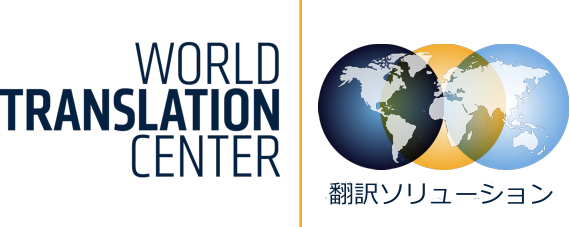WORLD TRANSLATION CENTERは、世界中の専門翻訳者による翻訳と音声録音サービスを提供する大手翻訳会社です。
Articles and Stories
The Period.
Bet. You. Read. This. With. A. Pause. After. Each. Period.
You paused after each period, didn’t you?
Punctuation is an important part of reading and writing; it is most often at the end of a sentence but also used to identify numbers. Many countries have different rules about the full stop or period.
The period at the end of a sentence was first used in Roman inscriptions to separate words or phrases. But there are languages that do not use a full stop at the end of a sentence, some use a vertical line, some a round circle and some just a space.
In Chinese and Japanese, for example, the full stop is a small circle. 。
As you know, Chinese characters can be written horizontally or vertically. If written horizontally, the full stop is placed like in English at the bottom right following the last character. If written vertically, it is placed immediately below and to the right of the last character.
In Chinese and Japanese writings each character is part of a grid and needs to fit into a square frame. Because of this, Asian punctuation marks are larger than their European counterparts, as they occupy a square area that is the same size as all other characters. This often gives the impression that there is an extra space after a full stop. These Chinese punctuation marks are called fullwidth to contrast them from halfwidth European punctuation marks.
Other Asian and Indian languages also use a circle instead of a full stop.
In Burmese writings, two straight vertical lines are used to identify the end of a sentence “||”. In earlier times when paper was not readily available, a straight line would tear the leaves used for writing, so instead, a space was used to mark the end of a sentence.
The Amharic language uses four little squares in place of a full stop that look like this: ።
Armenian uses two squares, almost looking like a colon. ։
In Hindi, the end of a sentence is indicated by a vertical line “ | ” .
In Arabic and Urdu, the full stop looks like a dash. –
Hebrew uses a dot that looks almost identical to our full stop, however, it is used less frequently than in English.
In Thailand, a full stop is only used for an abbreviation, but not at the end of a sentence.
As per the original grammar for Hindi and Punjabi, a full stop is supposed to be a dash like this – ।, but modern technology is changing it to a full stop.
PERIODS IN NUMBERS AND DATES:
ABC languages:
In numerals most European languages use a comma instead of a period to identity larger numbers. Example:
$1,234,567.89 = $1.234.567,89
However, for Spanish used in the U.S. and in Mexican Spanish, the same pattern as English is often followed.
French: When writing numbers, either a period or a space may be used to separate every three digits
Farsi:
In Farsi, a smaller forward slash is used for the decimal separator, which is placed slightly lower than the written text, and to separate the thousands, an apostrophe like symbol is used.
When it comes to abbreviations and measurements different rules also apply to many languages on whether to use a full stop or not.
In many European languages, dates do not have a space after the period if you write the entire date with numbers only:
10 janvier 1973 = 10.1.1973
Hindi and Punjabi use various formats: 12/06/2012 or 12-06-2012 or 12.06.2012
There is so much more to any language than just translation. Each language is so complex that even a native speaker sometimes has to look up the rules. We therefore always recommend having each translation reviewed by a second translator. Four eyes see more than just two. You normally ask others to check your English file for accuracy before publishing it, why not do the same for a translation?







